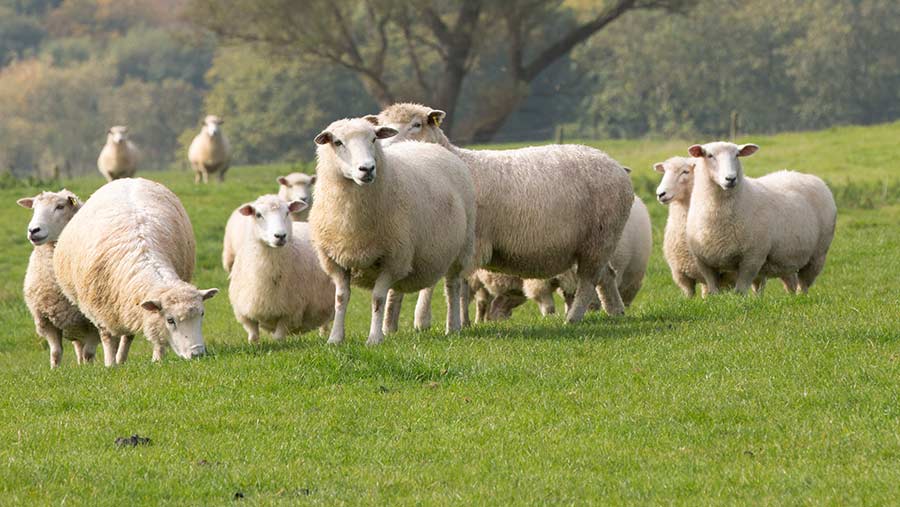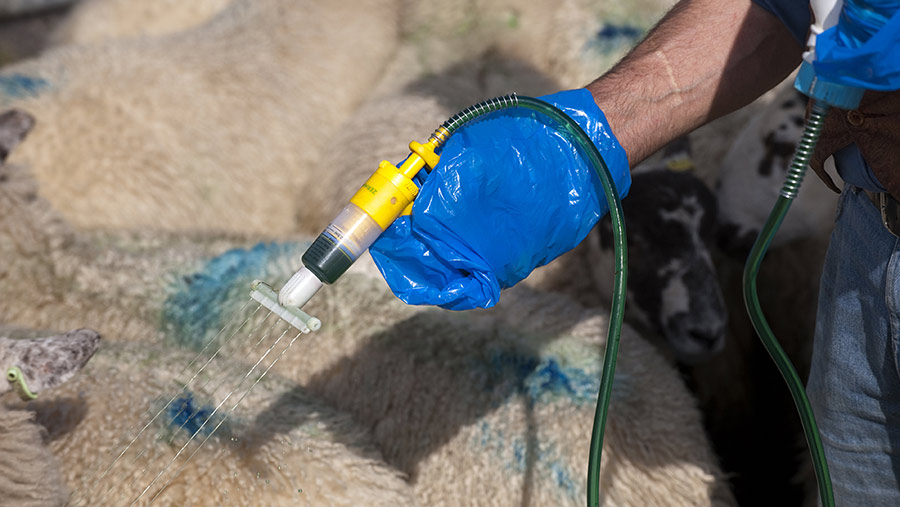Call for vigilance as blowfly strike risk rises
 © Tim Scrivener
© Tim Scrivener The risk of blowfly strikes in sheep flocks is increasing rapidly and the National Disease Information Service (Nadis) has warned farmers to increase vigilance.
The disease primarily affects sheep on more than 80% of UK farms, Nadis said.
See also: How shearing lambs can improve growth and reduce labour
As well as severe welfare implications, figures suggest blowfly strike costs the sheep industry £2.2m a year in lost productivity.
Nadis’ latest alert said June weather conditions were ideal for blowfly strike and all but the north of Scotland had been put on amber alert (moderate risk).
It added that, even though fly numbers were yet to peak, strike risk was fast-increasing amid warmer, wet conditions.
“Summer rain combined with higher temperatures makes ewes and lambs highly susceptible because fly eggs and maggots survive better in wet wool,” Nadis said.
Flies are attracted to the faecal-stained fleece, so dirty backends, foot-rot lesions and open wounds all provide egg laying sites.
Increased vigilance is needed to spot struck animals quickly, the organisation warned. Flocks should be carefully checked at least once a day throughout the blowfly season to look for any signs of strike.
It is often necessary to handle animals and part the fleece to fully appreciate the extent of disease.
Signs of blowfly strike
Early
- Irritation
- Nibbling at tail head
- Increased swishing of tails
- Rubbing
- Further signs of discomfort in lame animals
Severe
- Discoloured/damp fleece
- Fleece loss
- Separation from flock
- Sick animals
- Death (due to septicaemia from secondary bacterial infection and release of toxins)
Prevention and treatment
Q&A: Blowfly strike
See our Know How advice in Q&A: How to prevent and treat blowfly strike in sheep
Use a preventative spray – Licensed sprays or pour-on products containing cyromazine and dicyclanil can be used ahead of the main risk period for flies. However, heavy rain and a wet fleece may reduce the products’ efficacy.

© FLPA/Shutterstock
Consult a vet – Discuss preventative products with a vet or suitably qualified person (SQP). Product suitability will depend on labour resources, age of lambs during the risk period, withdrawal periods and anticipated slaughter dates.
Reduce dirty backends – In addition to the chemical treatments, efforts to reduce dirty backends through:
- Dagging
- Crutching
- Timely shearing
- Controlling worm burdens via a faecal egg counting and parasite control plan.
Treat lame sheep promptly – Flies are attracted to wounds caused by foot-rot, so prompt treatment will reduce the risk.
Manage the fly population – Reducing the fly population early in the year has the greatest impact on the fly challenge during the grazing season. Inexpensive fly traps have been shown to reduce strike incidence by 80% in a season.
Prompt disposal of deadstock – Flies are attracted to decomposing carcasses and numbers will increase if deadstock is not removed.
Graze exposed pasture – In high-risk periods, consider grazing more exposed pastures which are less favourable to the flies.
How to set up a blowfly risk alert
Nadis and Elanco Animal Health provide an interactive map to provide farmers with real-time updates on blowfly risk.
It uses data from the Met Office to predict the emergence of blowflies and produce forecasts.Farmers can also report cases of blowfly in their flock to help highlight areas already hit by the disease.
The map is split into small grids to allow more localised reporting and uses a colour code to distribute risk: green (low risk), amber (medium risk) and red (high risk).
You can report a case or review the risk in your area online via the blowfly strike tracker.
